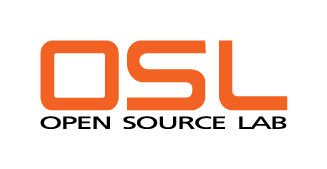http://www.personaltelco.net/images/tribune-adam.jpg
The below is a copy of the Portland Tribune article which appeared on the front page of the business section. Thanks to Peter Forsyth, Nigel Ballard and Hope for the work it took to finally get us some local press. It has been reprinted with permission of Andy Giegerich. -- AdamShand
Going Wire to Wire(less)
By Andy GiegerichBR August 7 2001
They say they want a revolution. Well, you know, they don't necessarily want to change the world.
But a group of home-based Portland area wireless tech devotees do want connections to their home computers, to businesses they walk past and to high-speed Internet services. Anytime. Anywhere.
Without cables. For free.
The enthusiasts say a wireless local area network, or WLAN, revolution is afoot. With it, Portland has emerged as a birthplace for wireless go-getters.
Members of two local groups, PDX Wireless and Personal Telco, want to bring WLAN to the home arena the old-fashioned way: by connecting to each other via shortwave radio.
In a perfect world, that would mean enough nodes, or points from which the network is reached, to allow for plug-in free high-speed Internet service from all points in the city. A laptop user, say, could download MP3 files or streaming video from any tavern in town.
Of course, that would require thousands of homeowners throughout the city to construct connecting radio antennas on their roofs. Or operators of the city's largest utility towers would need to allow their structures to be used for delivery of the free link-ups.
Neither scenario will happen tomorrow. Group members have yet to achieve even one home-to-home antenna hookup.
Still, the fledgling concept is fun in an underdog, "what if?? way.
Adam Shand, Personal Telco?s founder, said his group plays to Portland's cooperative sensibilities.
"Think of it this way: Personal Telco is an informal agreement by which I set up a WLAN node at my house and let people use it for free high-speed Internet access, or to access their home machines for free, he said. In exchange, they'll help someone else."
Doing what they can
Conventional LANs consist of a wired infrastructure, such as networks that link a workplace?s computer equipment. Lately, some firms have eliminated the wires, creating WLANs that provide employees with more flexibility and mobility.
WLANs transmit signals on electromagnetic waves that carry data through the air. Users can access the WLAN via an 802-11b connection called a "Wi-Fi" that transmits and receives data on an extremely shortwave radio wavelength. (The term 802-11b refers to the electrical standard applied to the technology by the Institute of Electrical and Electronics Engineers.)
WLAN has emerged in various ways around town. Portland State University is piloting a groundbreaking WLAN pilot program. The university now has more than 20 nodes in its Smith Memorial Center, library and Urban Center.
The 10-month old WLAN ?gives students and staff network access everywhere, said network engineer Jon Snyder. "The range allows them to sit in the park blocks on a nice day and use the Internet."
Another WLAN example comes from Dallas-based MobileStar Network Corp., which runs a system at the Hilton Portland. The company also plays host to several WLAN-enabling devices at Starbucks that allow coffee sippers to use broadband Internet services. Spokeswoman Karyn Guth said Starbucks plans a Portland system rollout in the near future.
Only connect
Late last summer, when WLAN but a bean in Starbucks' grinder, Portland neighbors Nate Gelbard and David Elkins decided to share a digital subscriber line connection in their apartment building via a wireless hookup.
They soon joined with Rob Church and Tracy Camp, two friends who lived eight blocks away, setting up directional antennas and other equipment.
As it turned out, the antennas couldn?t achieve a line-of-sight connection wireless signals can be interrupted if trees or buildings block the antennas. But the four friends decided to continue exploring ways of making the technology work, and PDX Wireless - Portland's first community network - was born.
The group united loosely with Shand's Personal Telco in February. Together, the groups boast 94 nodes, or areas with antennas or other WLAN devices that users can connect to.
Sam Churchill, a de facto community network historian, said the concept holds great promise.
"Say I'm walking down the street and want to look at a bus schedule," Churchill said. "The application could offer utility information of a public nature. If that wireless connection can be maintained when you're roaming down the street, it would offer great benefit to everyone."
Community network equipment can cost as little as $300 or more like $2,000. The primary required equipment includes a Wi-Fi access card, an antenna, cables, a router and a lightning arrester.
So far, several users have erected antennas in hopes of achieving line-of-sight connections with their community network brethren.
However, no community networkers have yet succeeded in linking antennas. Gelbard said he hopes to link his apartment building with his band's practice space in the next two weeks.
Lonnie Wormley, a Southwest Portland techie and wireless LAN proponent, said broadband sharing serves as community networks? biggest plus.
"It's like hitchhiking," he explained. "At college in the 1970s, you could just stick your thumb out and catch a ride. I see wireless networks as the same thing. Some of us have DSL, some of us don't. And if you can give a little and take a little, there's always something there when you need it."
Contact [mailto:agiegerich@portlandtribune.com Andy Giegerich].

